Space Wolves Review: Saga of the Beast and Taking Space Wolves to the next level
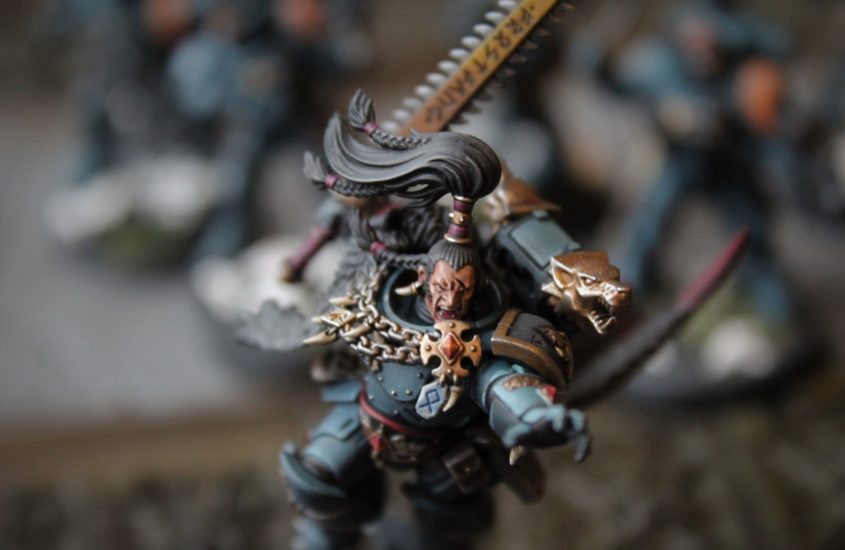
Saga of the Beast was officially released this last Saturday and I am sure all of you have been in a frenzy going through the new rules. Instead of walking through them one by one, I want to focus on looking at some of the options opened up to us as an army. For this article, I am assuming you have read through Saga of the Beast, so if you haven’t, please go do so now! I promise I will be here when you finish. I’ll highlight a few key combos and tools for you to consider as you look to build lists in the brave new world full of doctrines, stratagems, and deeds of legend!
Space Wolves Pre-Saga of the Beast
Space Wolves have always been a deadly army. Long Fangs having access to excellent stratagems like Keen Senses give us efficient shooting, while Wulfen are the deadliest combat unit in the game. Our characters are reliable in combat, being accurate with several ways to get re-rolls to hit and wound.
Space wolves have always dealt great damage in melee, getting into combat was always the problem. Other Space Marines could more reliably deliver their combat units, leaving us as an afterthought when it came to the close quarters Chapters.
Space Wolves Post-Saga of the Beast
I am incredibly pleased with a lot of the changes made to the Sons of Russ, but I know there is some lamenting and envy by some of my fellow Fenrisians when they compare their army to Ravenguard, White Scars, or Blood Angels. I am here to tell you to focus on what we do have and how to utilize the tools that we did get. If we can do that, I firmly believe that we are now a force to be rightly feared on the tabletop. So grab your copy of Saga of the Beast, open your mind, and let’s take a dive into the icy and constantly shifting Fenrisian waters.
The Big Additions to the Army
The biggest gains from Saga of the Beast can be organized into four main themes.
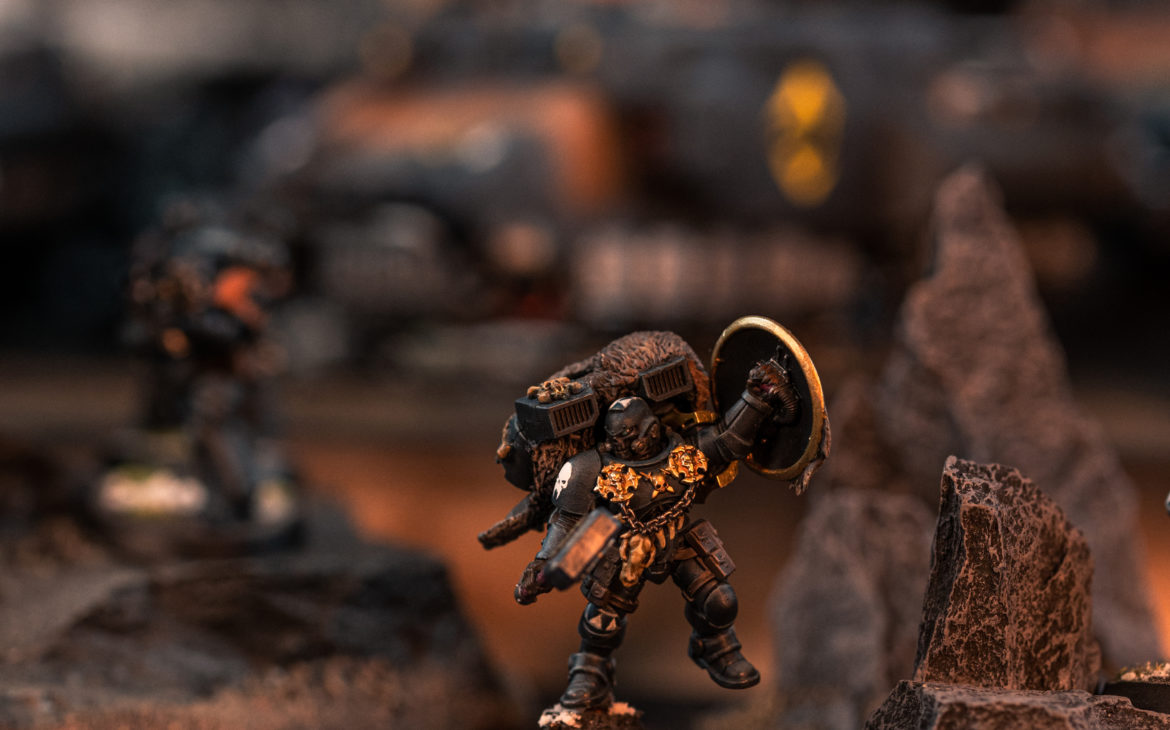
- Powered up characters: Space Wolf characters are now arguably the deadliest in the game. Touch of the Wild just does so much to increase our characters lethality, and Ragnar Blackmane will table armies nearly by himself. Being able to use Hero of the Chapter to take an additional warlord trait opens up our army to so much more utility. The power of the Wolf Priest litanies also comes with an ability to heal other units which can help keep the steam in our character engines.
- Reliable charge from deep strike: We have always had the ability to outflank units. It is an incredibly powerful ability, but it has always been a big gamble. Making 9″ charges, even with re-rolls, was never a reliable strategy. Ragnar and Wulfen provide easy access to re-rollable charges, letting us spread out the aura to large portions of our army, something other combat armies cannot boast. Litanies change the game significantly by giving us access to Canticle of Hate, taking us from a 48% chance with re-rolls, up to being just shy of an 83%. This can be a great tool to have in the back pocket when the terrain or the matchup doesn’t suit starting your key units on the battlefield.
- Extra tactical movement: While we didn’t get easy access to advance and charge or auto-advance abilities, we did get a lot of movement in other phases of the game. Counter-charge lets any Space Wolf unit perform a 6″ heroic intervention, an incredibly powerful ability letting us catch people trying to fall back or create a large no-go zone for your opponent. The second half of Canticle of Hate is arguably its most powerful as a 6″ pile in and 6″ consolidate is incredibly good. Ragnar Blackmane also provides Battlelust which again gives your army a ton of movement outside of the movement phase. I detailed some ways you can use this in my last article, here. Remember that unlike new marines, Space Wolves have the old version of Honor the Chapter that does not require a unit to be within 1″, and combining it with the above abilities can net you 9-12″ of extra movement! This aspect of the game is one of the hardest to master, but good movement in the charge and assault phase will win you games. Utilizing these new abilities will be a huge factor in distinguishing the Bloodclaw players from the true Jarls among us, so stick with it and keep experimenting with ways to leverage it!
- More Lethality: Combat Doctrines and Savage Fury have greatly increased our lethality, and while I agree that getting to combat is the key to ultimately doing more damage, there is a silver lining in that we can do more with less when we finally do make it there. We may lose half our army getting there, but a handful of characters or a unit of Wulfen will often be enough to turn a game. Anyone who has watched the last battle report can at least attest to that. Adding AP to basic troops like Incursors and Blood Claws goes a long way into increasing their effectiveness against a large variety of targets. Always having access to Tale of the Wolf King and the Lord of the Deeps on any Wolf Priest you bring is amazing for this as well. Interestingly, we also have a number of ways to dump mortal wounds onto units with Crushing Assault, Vicious Executioners, and new relics like Mountain-Breaker Helm, and Talisman of Storms. I think keeping your composure and playing patiently in the first couple of turns will be the hardest lesson for Space Wolf players to learn. You will feel like you are playing behind in the first couple of turns, but can swing the game quickly in combat. And as a bonus for those that think the Blood Angel’s got a better specialist doctrine with Savage Echoes, here’s why I prefer ours:
- it is better on units with large number of attacks like characters (see point 1),
- it has an amazing combo with Gene-Wrought Might, which has a stipulation in the stratagem to generate two automatic wounds instead of one.
- Hunters Unleashed makes it mathematically advantageous to re-roll hit rolls of 1-5, fishing for 6s when we utilize Gene-Wrought Might or have extra effects on 6s, like Incursor’s paired combat blades. Seriously, simulate using Gene-Wrought Might on a unit of 10 Reivers, roll 41 dice and re-roll all 1-5s (try it, it’s fun!).
Units to Consider
There are couple of key units that got some interesting options in the book, and I want to highlight them here as I think they can become core elements to our army now.
Wolf Guard Terminators
Wolf Guard terminators have received a lot of buffs from a lot of different parts of the book to make them a compelling choice. Fury of the Champions (or is it Furry?) is awesome, especially when paired with the unique loadouts Space Wolf Terminators can take. Combi-plasma suddenly cannot overheat, and doctrines give some extra punch to storm bolters. You can take a squad of 10 with 2 thunder hammer/storm shields/cyclone missile launchers, 3 thunder hammer/storm shields, and 5 with storm bolter/storm shields. Throw in a cheap Arjac to give them +1 attack and Logan to give them re-rolls and make them fearless, and you have a very powerful bomb that can remain safely on the board until you need them to strike. The storm bolters put out 28 shots at AP-1 on turn 2 and can act as ablative wounds for the rest of your terminators. When they finally get into combat they are still putting out 4 attacks apiece thanks to Arjac, for a total of 26 Thunder hammer attacks (you will put one on the Pack Leader). Vicious Executioners is also a great stratagem for them, letting them do mortal wounds to elite infantry or units with good invulnerable saves.
Thunderwolf Cavalry
The stars of editions past have seen a lot of their power shift to stratagems and litanies. This lets you build them cheap. Throw chainswords and storm shields on them, maybe a thunder hammer on the Pack Leader for good measure, and they will still be effective against anything you come up against. They will mulch hordes, while Deathgrip Bite and Tale of the Wolf King and Lord of the Deeps make them lethal to vehicles. If you encounter elite infantry you have options with Deathgrip Bite and Vicious Executioners. Remember Thunderwolf Cavalry also have the Wolf Guard keyword and their mount attacks will generate the mortal wounds as well, meaning each model is generating 7 attacks to trigger Vicious Executioners. You can also use Crushing Assault to finish off a unit and then use all the extra combat movement we have access to move into something else during the assault phase.
While infantry may still laugh at Thunderwolf Calvalry from the tops of ruins, the veteran Wolf Guard just don’t care. They don’t have to be kitted out with special war gear to kill now. They are tough mobile screens, acting as linemen for your characters. They can toe the deployment line, able to tank some serious firepower, and can take on whatever opponent they face. Most importantly they give your army space. They let your characters get to where they want to be and can pin an enemy unit for a Wulfen flank.
Incursors/Reivers
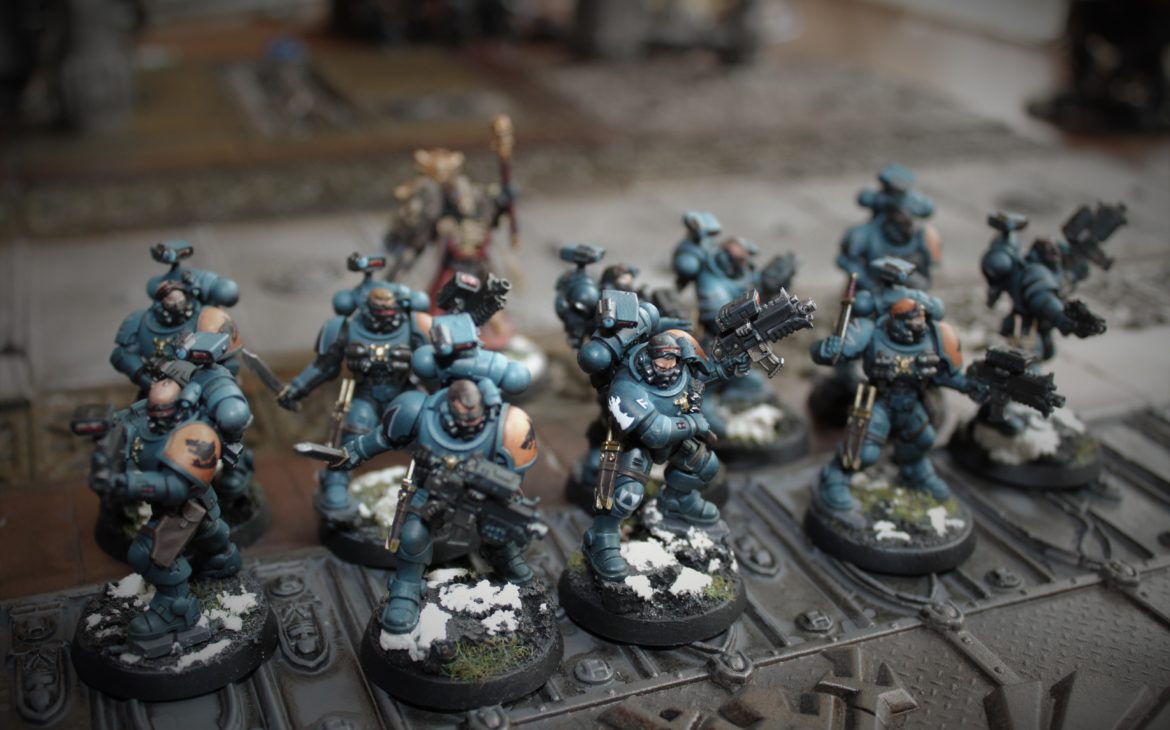
I’ve gone in-depth on the power of Incursors in my last article. The real shining star is combining Primaris infantry with Gene-Wrought Might. Our version of the stratagem specifically combos with Savage Fury to trigger two wounds on a 6 instead of just 1. This works best on a big unit of Incursors or Reivers, and it really lets them punch above their weight class and go from horde clearers to wiping vehicles and tougher elite units. The ability for both of these units to benefit from the Vanguard Warlord Traits is also very good. Master of the Vanguard is amazing, providing a bonus to movement, charges, and advance rolls. Reivers also have access to the Stalker Pack from Vigilus Defiant to gain additional bonuses to charge should Canticle of Hate fail to inspire. Their ability to benefit from Shrouding, Temporal Corridor, and Shoot and Fade makes them subtly fast and lets you do some unique tricks. Get a Phobos Rune Priest with the new Wyrdbane and Saga of the Hunter into combat early, and you can start sending your Reivers all over the board with Temperal Corridor or out-duel opponents from range by abusing some key ruins with a big squad of Incursors and Shoot and Fade. You can even combine both of those examples getting a unit to move 3 times in one turn! The Reivers’ ability to come down mid-game to provide another 10 bodies for screening for your characters is also not to be underestimated. The Vanguard Warlord Traits and Obsucration Discipline are easy to pass over at first glance, but I encourage you to give them a second look and try them out in-game, especially now that the Phobos units pack a serious punch!
Bringing It All Together
Space Wolves are incredibly deadly in close combat. I do not know anything that wants to go toe-to-toe with a large unit of Wulfen, and its been written to death about how good thew Ragnar is.
It’s just a fact of life that Space Wolves will unfortunately take a beating getting there. The good news is we have some tools to prepare for it, and we can build lists with this in mind. Here is my list of elements every good Space Wolf player will need:
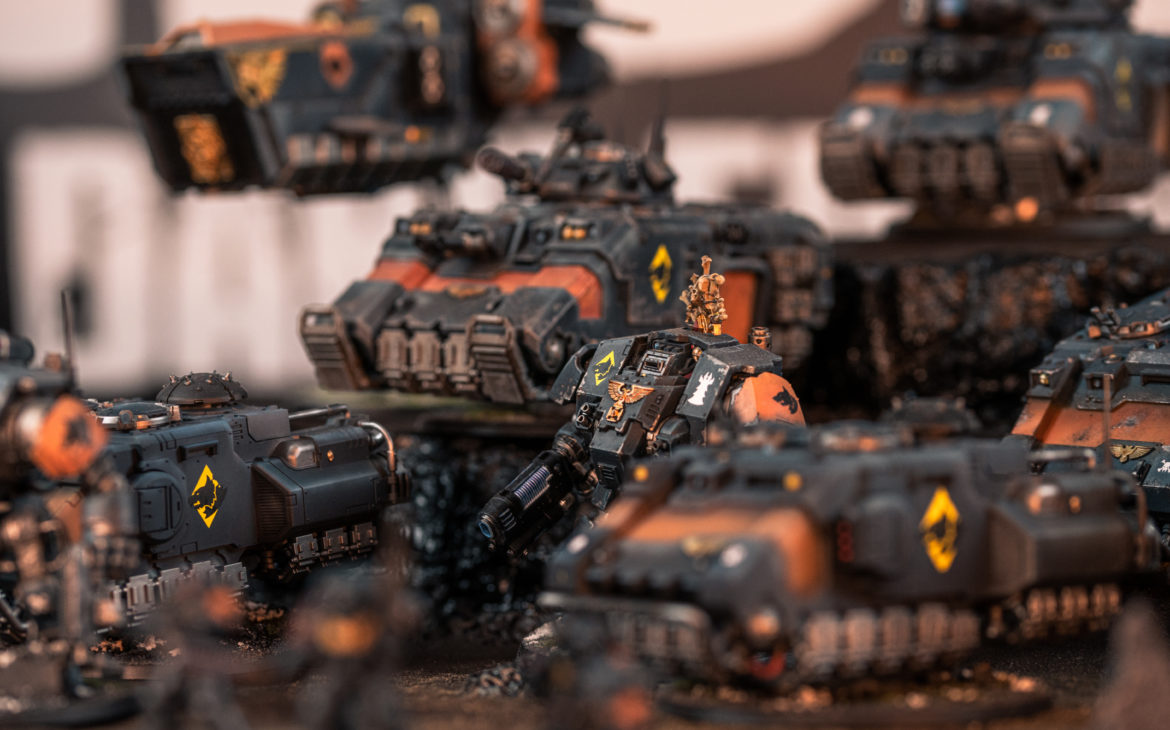
- Tough Mobile Screens: Impulsor accomplishes amazingly well. Jon Kilcullen has already demonstrated success using the Impulsor Rush prior to Saga of the Beast. The good news is we also have options with the new flexible Thunderwolf Calvary. They can advance midfield turn 1, creating a 6″ bubble around them deterring enemy movement. The Cavalry can also wrap and leap from any forward screens an opponent may have. These units are also critical for absorbing overwatch for our more critical assault elements later in the game.
- Powerful Characters: Take your pick, you can’t really go wrong here. Ragnar is incredibly strong and only 120 points, but our Smash Wolf Lord and Battle Leaders are better than ever. You can also go for Logan and Arjac with a large Terminator Squad. Wolf Priests are essential, with the power of Litanies and the ability to heal other characters. I really like a Wolf Priest with Jump pack with Saga of the Hunter and the Canticle of Hate to hunt down screens and forwards units. He is incredibly fast and powers up your army’s mobility mid-game. Saga of the Majesty is another interesting pick as right now he can generate 9″ Litany auras. Throw a Mountain Breaker Helm on him and you may even complete that deed of legend, powering up all the other incredible auras in our army.
- Early Board Presence: Your biggest threats might not make combat right away, or might need to start the game off the board. You need some early board presence to keep in in the victory point race. Incursors and Infiltrators give us early board control and can prevent falling into points deficits while our main threats get into position. Invictor Warsuits are another interesting option. I prefer mine with autocannons as they can start in an opponents face or offer backline fire support if the enemy has limited firepower. I think Drop Pod assaults are also a possibility, as you can get Ragnar out of an Impulsor and a Jump Pack Wolf priest into position turn 1 to support. This task can also be accomplished with a strong fire support team. Long Fang’s have always been nice because they can operate independently. It’s a tough sell to keep Characters in the back lines for re-roll support, but Morkai’s Teeth Bolts helps immensely here. Eliminators never felt quite worth it without re-roll support, but they are now incredibly fun with a Phobos Wolf Lord with this relic (seriously try it). Alternatively, you can put it on a Primaris Wolf Priest that can reach out with a 16″ absolver bolt pistol to provide reroll hits with Litany of Hate and reroll 1s to wound now for a unit of Wulfen. He can also fire it into close combat since its a pistol. This really does help our other mobile fire support units that want to spread out and find the optimum angles such as Suppressors, which can help deny some nasty overwatch.
- Main Offensive Threat: These powerhouse units are why you are playing Space Wolves, and in my eyes, there are two units that can accomplish this role: A large squad of Wulfen or Wolf Guard Terminators. The terminators are more flexible since they are able to shoot as well as fight and can deep strike anywhere on the board. The trade-off is that overall they are less durable than the Wulfen, as most of the fire they face will be putting them at their 3+ invulnerable save, and the Wulfen 5+ to ignore damage is a godsend, especially against multi damage weapons. Large units of Wulfen are harder to counter as outflanking them is a legitimate option with Canticle of Hate. I would aim to bring them on the board Turn 2, just because litanies do fail. If you have the option, bring them on because even in tactical doctrine, they are still as lethal as ever. I think Wolf Guard with jump packs and Aggressors can fill a similar role, but ultimately are very fragile units. That said, if they are working for you to keep running them! Just don’t be afraid to try some of the different elements in this list.
Closing Thoughts
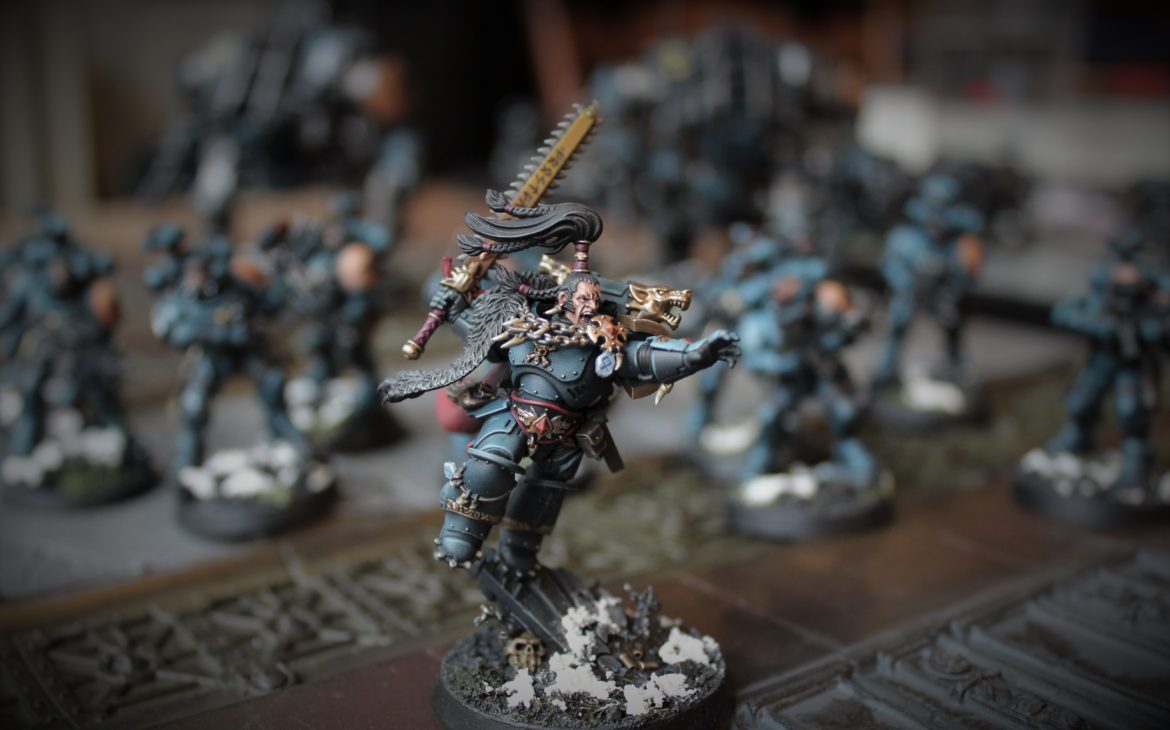
I hope I have given you some direction to your playtesting. Focus on the tools we do have and keep experimenting. While the other Space Marine chapters have been given powerful playbooks, we have been given a set of wilderness survival tools and some very sharp knives. Our power is not as obvious and it will take a lot of play experience to develop the keen senses required to utilize all of our tools effectively. There is a lot of power in subtlety. Stick in there, keep adapting, keep improving, and eventually your opponents won’t recognize your cunning plan until its too late!

Please let us know what you’d like to see from us in the future! Don’t be afraid to get in on the conversation. Please follow us on the usual social platforms to stay current with the latest GDFC releases. I hope you are all staying safe out there!
- Twitter: @GDFilthyCasuals
- Instagram: grimdarkfilthycasuals
- Facebook: grimdarkfilthycasuals
- Youtube: GDFC Youtube Channel

is a founding member of Grim Dark Filthy Casuals, Content Director, Editor, Author, Coach and Chief Dad Joke Officer

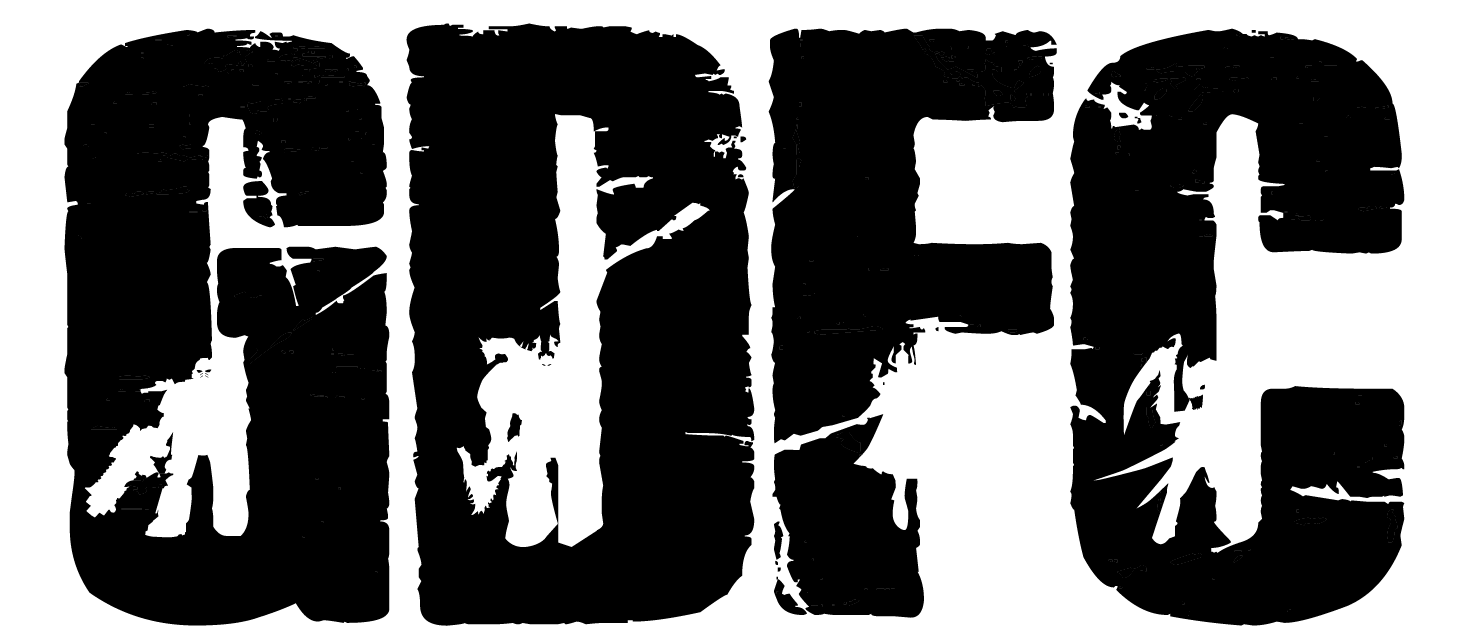
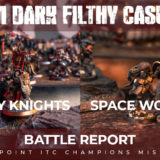
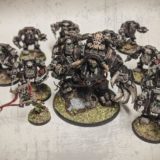






Ian Donovan
Hi, same guy from the youtube video comments. Just wanted to say that after looking at the book and meta, your suggestions are exactly what I cam up with on my own. My new list uses 3 Invictors w/ Incendium Cannons, 2 units of Thunderwolf Cavalry (two Hammers, but I may cut down to just 1 per squad), 2 units of Wulfen (all Hammers), and a unit of Aggressors. I think Aggressors are a hidden gem as back field holders or great On the Hunt target, since two turns of Tactical doctrine shooting with them can really soften up the screens.
I’ll have to experiment with the Invictors having the autocannons. My thinking has been that I want the invictors moving up as a first wave, so auto-hitting is a huge upside, but your point about being a fire-base is well made. Thanks for the insight!
Brian Moy
I know BTabs will reply as well, but I love your idea of Aggressors and think you may be right about their utility in a SW list. One of the reasons I love autocannons on the Invictors is if you end up as Defender against another melee army. It gives you a solid firebase at range, but also the ability to counter assault. Any melee army is going to think twice when they see 3 invictors sitting behind a screen waiting to counter whatever hits their lines.
Ian Donovan
One of the reasons I like the flamers for Invictors is that it can really discourage a charge or at least take a chunk out of their charging unit.
But I need to play around with Counter Charge. It is such a good stratagem, and I know it is going to come up a lot.
Brian Tabata
I love that list and am actually experimenting with something similar.
Incendium canon Invictors are great, just a little one dimensional in my book. The autocannons really open up their flexibility. Ultimately they are easy to remove, and a lot of players take Big Game Hunter against you and get really surprised when you throw them in the corner of the board and just unload with 48″ autocannons and 36″ heavy weapons all game. If I am worried about a counter charge I sometimes throw a phobos rune priest up there with The Armor of Russ.
Agressors do add a lot of spice to a list. I don’t think they are durable enough to be a main hammer unit, but I really like how you’ve thrown them into your list here. I have 6 painted and ready for testing as well!
tristan
So, one thing I didn’t see, or that I don’t see in people taking about wolves.
How much command points for we need on average now, because I feel that dictates the list at the end of the day.
Brian Tabata
We will want an extra warlord trait, and likely an extra relic for 2 CP total.
I think if we use Honor the Chapter twice in a game we will be in good shape to win it, that or an Honor the Chapter and Only in Death Does Duty end. This will be another 5-6 CP.
I think this puts us at 10 minimum, single battalion and your choice of two other detachments. You will still have a couple CP to outflank or for a single cruicial reroll, but you will have to be disciplined.
John Norton
Cries in Necron. Just be happy that Space Wolves at least got something.
Here’s hoping Pariah features some Necrons and not just Sisters
GUSTAVO HERNANDEZ AVILA
Hi. Good job. I like It.
One question: the old version of Honor of the chapter lets me use a unit to right, although this unit did not charge or less of 1″ of other one?? When I read the core rule, It seems not…
Brian Tabata
It says that you may pick a unit to “fight a second time”, implying you had to have fought earlier in the round. So long as that unit fought, it could be because it charged or because it was within 1″ of an enemy unit, then you can use the stratagem. Usually this can be useful because you can pick a unit to fight, destroy it, and then pile in towards another enemy unit you declared a charge against, but stay more than 1″ away. That way they will not get a turn to fight and activate until after you pay 3 CP and fight again, potentially wiping them.
GUSTAVO HERNANDEZ AVILA
Ok. Then, firstly you declare charge against the two units. After overwatch, you fight vs the firts one. If you destroy It, you can consolidate to the second, and fight.
If only declared charge vs the first, and destroy It, you could consolidate to the second, but not fight. If you Contact with this unit, It could hit you, but in the Next turn It Will have to fall back to other units could shot you.
Thats right??
Brian Tabata
That is correct. Usually you would use Honor the Chapter in the second instance if the movement would let you surround an enemy unit trapping them in combat to keep them from falling back.
GUSTAVO HERNANDEZ AVILA
Thanks a lot
Matt
I’d really love a painting tutorial for your Wolves. They are absolutely gorgeous. That blue/grey is exactly what they should look like. Wish I could achieve that without an airbrush.
ปั้มไลค์
Like!! Really appreciate you sharing this blog post.Really thank you! Keep writing.
Keenan
Having read this I believed it was very enlightening.
I appreciate you finding the time and energy to put this information together.
I once again find myself personally spending way too much time both reading and commenting.
But so what, it was still worth it!